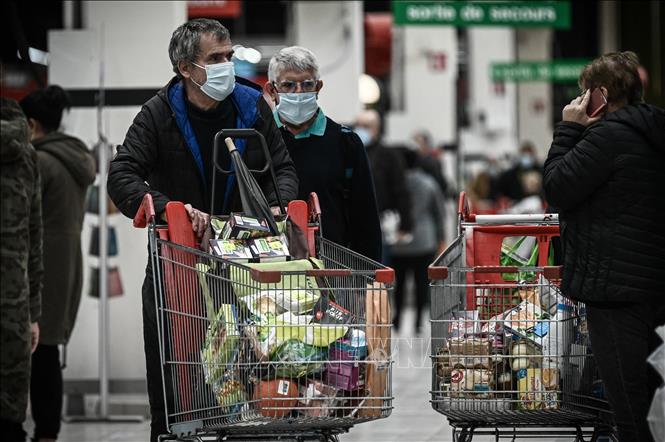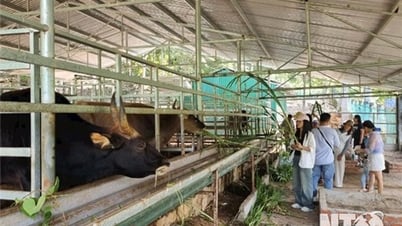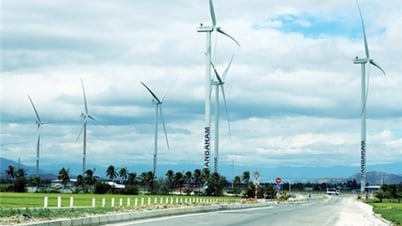According to a VNA correspondent in Paris, the United Nations (UN) predicts that with the current birth rate, the number of children born in the world will likely be lower than the number of deaths by 2050. At that time, the number of people aged 65 and over will double to 1.6 billion, or more than 16% of the population.
Over the past 50 years, life expectancy has increased by 10 years and the baby boom generation is reaching retirement age. This trend is accelerating the aging of the population, leading to rising pension and health care costs, especially as health problems worsen as retirees live longer.
Elderly people exercise in Tokyo, Japan. Photo: AFP/TTXVN
The rise of the elderly population and the fall of the young population pose a potential shock. Everywhere in the world, especially in developed and emerging countries, fertility rates are falling sharply. The worst is in Asia, in South Korea, where the fertility rate has fallen below 0.8, when each woman must have at least 2.1 children to maintain a stable population. According to the most pessimistic forecasts, China's population could halve by 2100. Europe is no exception. The proportion of people aged 15-29 has shifted from 18.1% of the population in 2011 to 16.3% in 2021 in the European Union (EU). By 2050, about 30% of the European population is expected to belong to the so-called "old generation". In France, the number of births in 2022 is 723,000, the lowest since 1946.
France’s population is forecast to continue growing until 2040, but one in three people will be over 60, compared to one in four today. In Spain, the population is forecast to decline by more than 30% by 2100, while the proportion of older people will rise from 20% to 39%. Italy’s population is likely to halve.
In addition, the proportion of people of working age, aged 15-64, is also falling. According to a report by the European Commission (EC), by 2050, the ratio of working-age adults to elderly people in Europe will be less than 2. As a result, the dependency ratio of the elderly population to the working-age population will increase to 57, nearly double the current level.
Given these enormous challenges, the issue of perception is arguably important but currently underappreciated. “Birth rates don’t get as much attention from economists or markets as gross domestic product (GDP) or inflation data, but few variables have such a significant impact on the economy over the medium term,” say HSBC analysts James Pomeroy and Herald van der Linde, authors of a study on the impact of demographics on economic growth.
People shop at a supermarket in Bordeaux, France. Photo: AFP/VNA
The decline in the working-age population puts pressure on the labor market and on state welfare. In addition to rising pension costs, an aging population will have greater demands on health care, which will require investment in equipment and infrastructure. Labor shortages will become more severe. According to the French Ministry of Labor, by 2030, an average of only 640,000 young people will enter the labor market each year, while there will be 760,000 vacancies. The World Bank predicts that by 2030, the EU will be short of over 4 million health workers.
Governments are introducing a range of schemes to support and encourage couples to have children. But the barriers to fertility are varied, ranging from environmental concerns, women’s tendency to delay having children, to financial constraints such as property prices, rent, childcare, and the cost of living. According to studies, these challenges have prevented 13-33% of young people from starting a family.
According to VNA/Tin Tuc Newspaper
Source link




![[Photo] President Luong Cuong receives Lao Vice President Pany Yathotou](https://vphoto.vietnam.vn/thumb/1200x675/vietnam/resource/IMAGE/2025/5/25/958c0c66375f48269e277c8e1e7f1545)


![[Photo] Festival of accompanying young workers in 2025](https://vphoto.vietnam.vn/thumb/1200x675/vietnam/resource/IMAGE/2025/5/25/7bae0f5204ca48ae833ab14d7290dbc3)
![[Photo] The coffin of former President Tran Duc Luong arrives in Quang Ngai](https://vphoto.vietnam.vn/thumb/1200x675/vietnam/resource/IMAGE/2025/5/25/1f1aca0d92ab47deae07934e749b35e6)
















































































Comment (0)